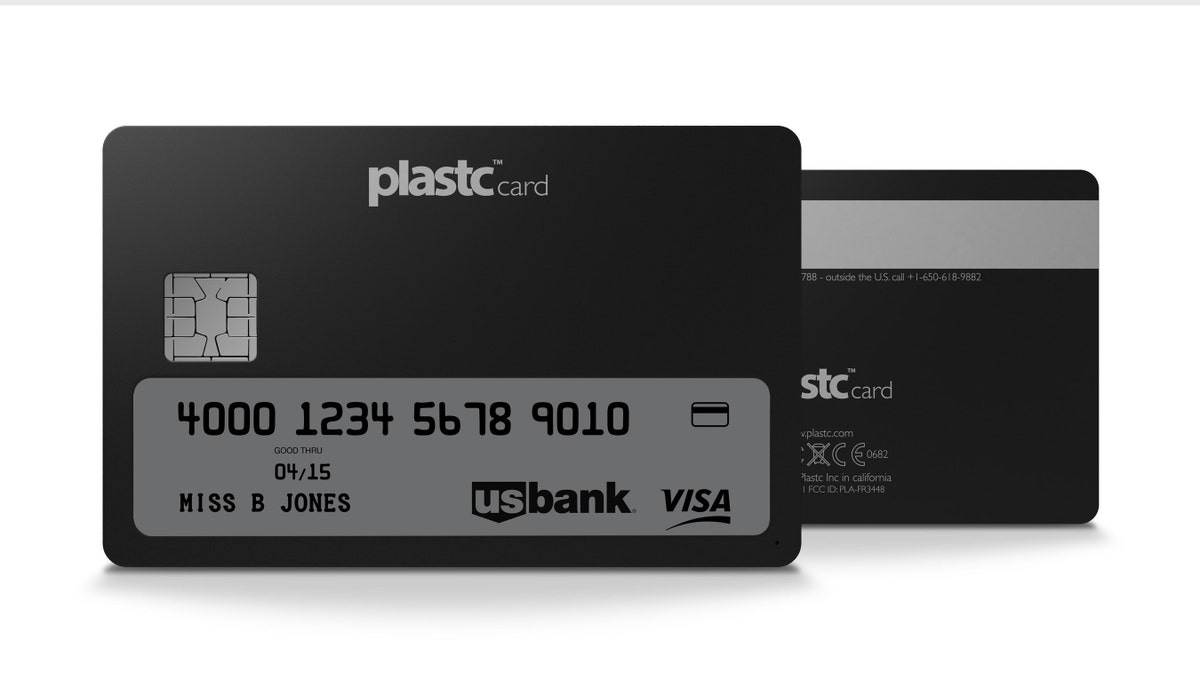
Plastc Card (PRNewsFoto/Plastc) (PRNewsFoto/Plastc/Associated Press)
Apple Pay may be making waves as the next big thing in mobile payments, but a new rival takes a more traditional approach. Plastc is a connected card that stores up to 20 debit, credit, gift, loyalty and identity cards so you can carry one piece of plastic around instead of 20. It's available for pre-order starting today for $155, and will start shipping in summer 2015.
What I found most intriguing about Plastc was its unique e-ink concept. While products such as Coin and LoopPay already use the card format to store your payment information, no other device out there has a digital display yet. The black-and-white touch screen on the bottom half of the card lets you swipe through and display individual card information, so you can present it to waiters or attendants at cash registers. This way, you can display even a black and white headshot of yourself that the attendant can refer to and compare for authentication.
MORE: 10 Reasons Coin Card Could be a Security Nightmare
The e-ink display can also be used to display barcodes or QR codes for scanning at checkout counters or even airport terminals. Better yet, if you're a Bank of America, Chase, Wells Fargo, American Express, Citibank, US Bank, Charles Schwab or Wells Fargo account holder, the card can display your transactional and balance history. You'll have to enter a 4-digit pin before accessing each card and account.
Another interesting feature of Plastc is its built-in support of chip and pin technology. The feature will not be enabled at launch, but can and will be activated thereafter, the makers told me, via an over-the-air firmware update. Since many banks are moving towards making cards based on chip and pin, which is more secure than the existing mag stripe method, Plastc's approach is a bit more future-proof than its competitors.
In addition, the card also supports rewriteable RFID and NFC to make it compatible with more devices. It connects to your smartphone or tablet via Bluetooth, which enables the set up process. Once you get the card, you can download the free app for iOS and Android. The app will ask you to upload a photo ID, from which it will pull your facial and other identifying information. Your visage will also be scanned, which is later used for facial recognition authentication.
From the app, you'll input the cards you want to store in Plastc. Each device comes with a card-reader that you can attach to your phone, letting you swipe to input cards to the app. The onboard battery will last up to 30 days, after which the card can default to displaying a profile determined in the app. This means even if you forget to charge the card, you won't be left stranded without a method of payment -- Plastc can still retain the information of the account you specify when it's dead.
There are obvious security concerns around such a payment method, and Plastc has a host of security and loss prevention features to counter that. If you are more than 100 feet away from your card, you'll get an alert on your phone, and Plastc itself will be locked.
If the connection with your phone is lost for a preset amount of time, your data will be wiped to prevent would-be theft. Then, when you're once again within range of your device, Plastc will reupload the information automatically. An onboard light sensor also keeps the display off until you take it out of your wallet to save battery when it's not in use.
When I met with Plastc's makers, a prototype of the card was not yet ready, but the team had videos of the e-ink touchscreen in action to share. I was impressed with how smooth and responsive the display appeared to be, albeit through a video of a component. I would be more interested in seeing a working prototype of Plastc and assessing how it stands up to Apple's Pay. The latter lets you use the iPhone 6 an 6 plus's built-in NFC technology to make payments in supported shops.
